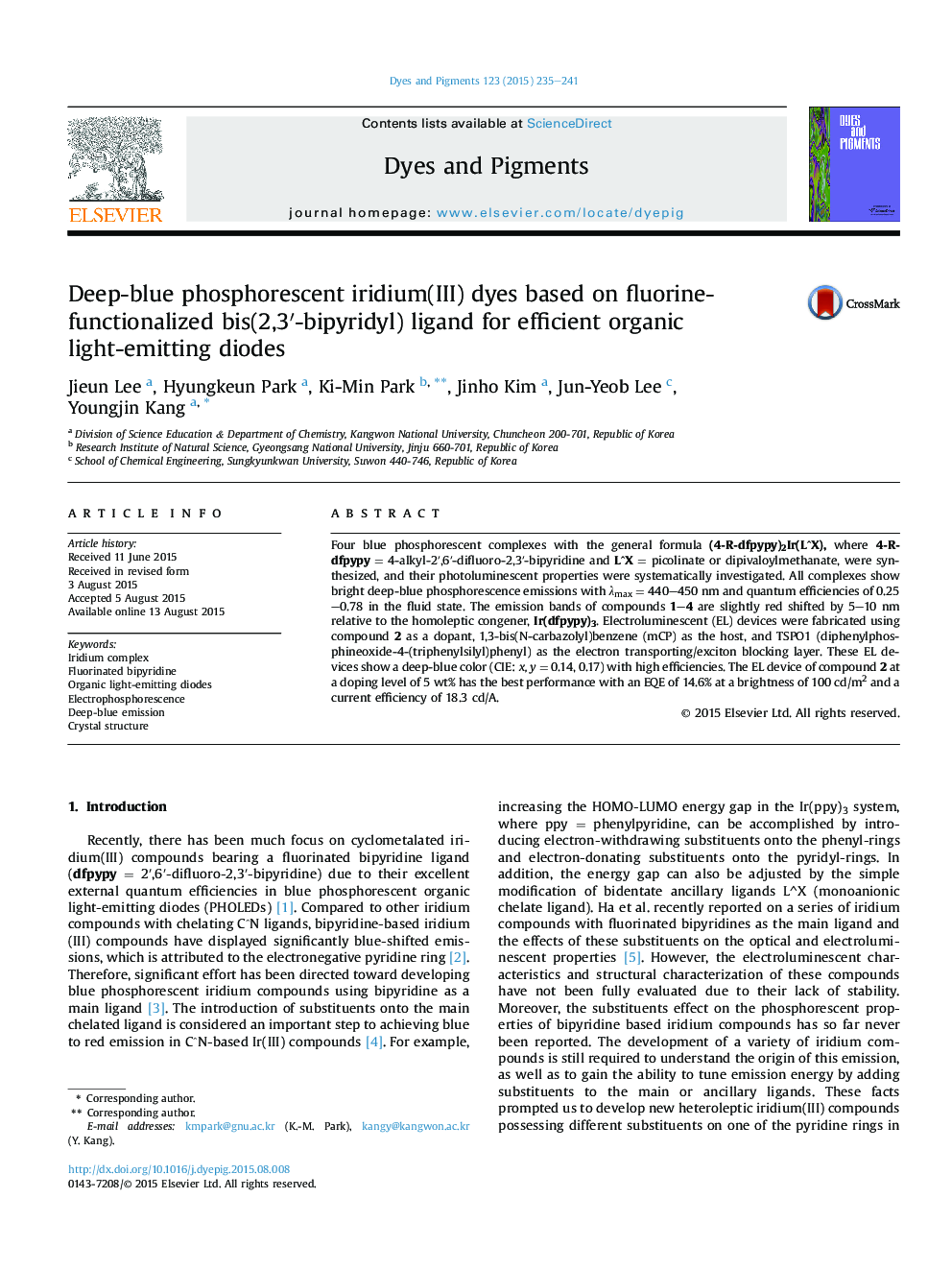| Article ID | Journal | Published Year | Pages | File Type |
|---|---|---|---|---|
| 175664 | Dyes and Pigments | 2015 | 7 Pages |
•Deep-blue phosphorescent Ir(III) dyes have been synthesized.•The emission maximum is in the range of 440–450 nm.•The dye with electron donating substituents exhibited better performances.•An efficiency up to 14.6% has been achieved with CIE (x, y = 0.14, 0.17).
Four blue phosphorescent complexes with the general formula (4-R-dfpypy)2Ir(LˆX), where 4-R-dfpypy = 4-alkyl-2ʹ,6ʹ-difluoro-2,3ʹ-bipyridine and LˆX = picolinate or dipivaloylmethanate, were synthesized, and their photoluminescent properties were systematically investigated. All complexes show bright deep-blue phosphorescence emissions with λmax = 440–450 nm and quantum efficiencies of 0.25–0.78 in the fluid state. The emission bands of compounds 1–4 are slightly red shifted by 5–10 nm relative to the homoleptic congener, Ir(dfpypy)3. Electroluminescent (EL) devices were fabricated using compound 2 as a dopant, 1,3-bis(N-carbazolyl)benzene (mCP) as the host, and TSPO1 (diphenylphosphineoxide-4-(triphenylsilyl)phenyl) as the electron transporting/exciton blocking layer. These EL devices show a deep-blue color (CIE: x, y = 0.14, 0.17) with high efficiencies. The EL device of compound 2 at a doping level of 5 wt% has the best performance with an EQE of 14.6% at a brightness of 100 cd/m2 and a current efficiency of 18.3 cd/A.
Graphical abstractFigure optionsDownload full-size imageDownload as PowerPoint slide
